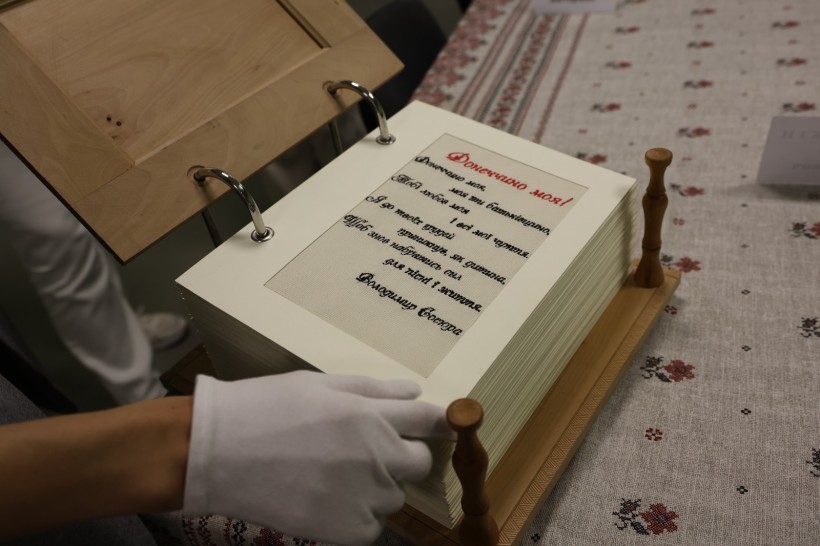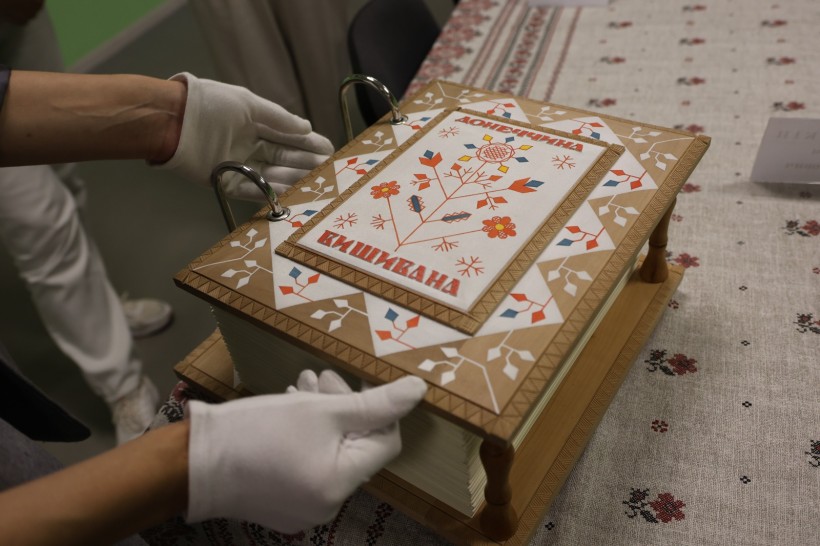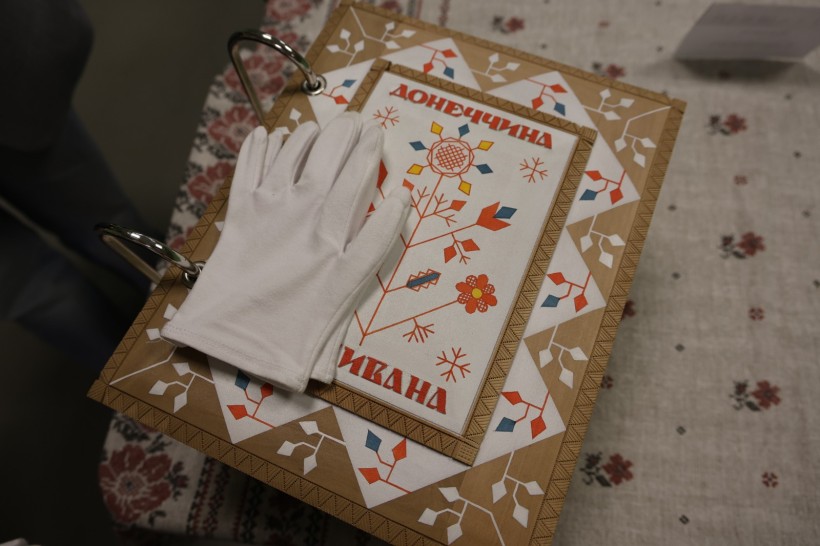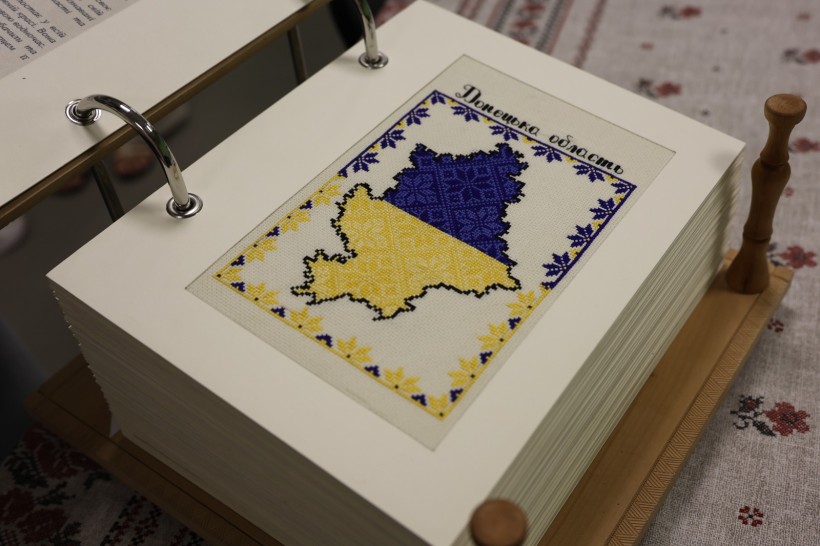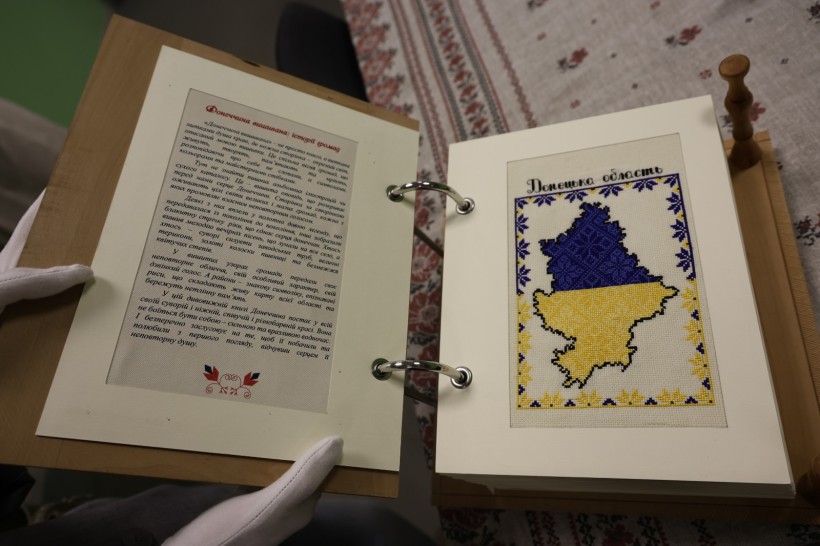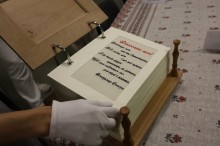
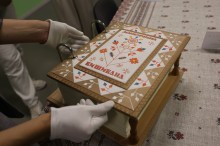
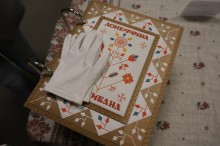
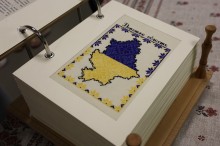
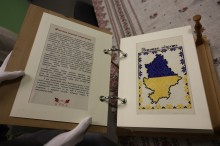
Against the backdrop of war, loss, pain, and constant shelling, when the Russian occupier is mercilessly wiping out the cities and villages of the Donetsk region, not only resistance is born — memory is born. Such memory has become the unique cultural initiative “Embroidered Donetsk Region,” which was presented on the eve of Ukraine's Independence Day in a bomb shelter.
This large-scale regional project has one major goal: to preserve the local identity of Donetsk Region. And to do so through the language of symbols, colors, and embroidery. Through thread, which in every stitch carries the history of the community, the power of the land, and the soul of the people who lived, live, and will surely live on it.
Forty-five communities and five district administrations of Donetsk region joined the project. Historians, local historians, and embroiderers worked in each community, putting not only their skill but also their deep love for their native land into their work. They embroidered coats of arms, landmarks, key symbols of their territories — everything that makes each community unique.
These works have become pages of history. Donetsk Region Embroidered is a large, beautifully designed book weighing over 7 kilograms, which begins with V. Sosyura's poem My Donetsk Region. Today, it is already an artifact of indestructibility and cultural resilience.
In the book, each community tells its story through embroidery. For example, the Kramatorsk community is represented by the “tree of life,” which reflects the development of industry, science, sports, and culture. It is protected by an embroidered “pixel” — a symbol of defense and military courage. The Mariupol community is the sea and an anchor, a symbol of depth, indestructibility, and hope. The Bakhmut community presented a story about industrial development, the Bakhmutka River, which was once a waterway, and the Cossack region of the Bakhmut Fortress, which became a symbol of the resilience of all Ukraine.
Each symbol is not just a picture. It is a silent story about what our communities lived for, what they believed in, what they lost, and what they will surely return to.
The venue for the presentation — a bomb shelter in Donetsk Oblast — was not chosen by chance. It became a sign of the times: the war forced many residents of Donetsk Oblast to leave their homes, lose their jobs, their health, and their normal lives. Many were left with only memories of home. But even in such conditions, even under shelling, Donetsk Oblast continues to create, to care for its culture, to speak out. Through the colors of threads, through symbols, through memory, through living stories.
“Donetsk Region Embroidered” is a response to destruction. It is a quiet but firm statement that Donbas is Ukraine. And Ukrainians live here who know their history, cherish their language, remember their traditions, and have faith in the future.
This project was made possible thanks to the joint efforts of dozens of people and institutions. We sincerely thank all the communities and district administrations, district military administrations that contributed to the creation of “Embroidered Donetsk Region.”
We thank the staff of the Kosiv State Institute of Decorative Arts, who helped transform the embroidered sheets into a complete book that now preserves not just fabric, but the living memory of generations.
“Embroidered Donetsk Region” is a book for future generations. It will outlive the war. It will tell our children and grandchildren who we were, how we survived, and what we defended. It tells us that even in the darkest times, we remained Ukrainians. With our roots. With our dignity. With faith in returning home.
We invite you to discover the embroidered stories of Donetsk Oblast at: https://salo.li/13d2A49 and follow the publications on Facebook under the hashtag #Донеччина_Вишивана.and follow the posts on Facebook using the hashtag #Донеччина_Вишивана.
